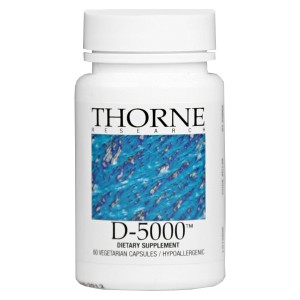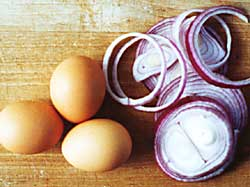 VITAMIN D
VITAMIN D
A lot has been written about Vitamin D over the last few months but what are the key points we need to know? The body is designed to get the majority of its vitamin D supply from the action of the sun onto our bare skin. I would like to discuss why this appears to be going wrong, what effects this may have on our health and how we can rectify it.
To get a clear picture we will first look at how the body makes vitamin D, how much we need and what part if any, our diet can play in getting adequate stores for us to use as our solar charged batteries start to flatten as Autumn arrives.
At the start of the process the sun hits our skin causing a chemical compound called 7-dehydrocholesterol, naturally present in the superficial layers of skin, to be converted to a compound called pre-vitamin D. This then changes into the most potent active form of vitamin D called cholecalciferol (vitamin D3). Whether taken by mouth or made in the skin, the compound called 25-hydroxyvitamin D [25(OH)D] commonly called D3 can be measured in the serum of the blood to determine a persons vitamin D status.
It is tricky to predict how much vitamin D a person may make because of issues discussed below but a light-skinned person, wearing a bathing suit, may make about 15,000 IU of vitamin D in 15–20 minutes in July at mid-day. Darker skinned individuals can do the same, but it can take much longer.
Vitamin D has traditionally been much studied for its implications in bone health and subsequent osteomalacia (a poorly mineralised skeletal matrix). Osteomalacia can lead to rickets in the young and a variety of bone problems from pain to osteoporosis in adults.
More recent studies are now showing that low levels of Vitamin D are also involved in a variety of auto immune diseases including type 1 diabetes and various cancers. A higher level of vitamin D would also appear to improve resistance to bacterial infection. Lower levels have been associated with many thought and mood disorders including Alzheimer’s, depression, seasonal affective disorder and just not being able to think clearly. Observations have also been made that some people with cardiovascular diseases such as heart attack, stroke and heart failure also have a lowered serum D3.
The process of making Vitamin D is hindered by sunscreens, liver health and of course actually being in the sun. With our increasingly indoor lifestyles our access to sun is getting less and less. It has been reported that sunscreen with a protective factor (SPF) as low as 8 can reduce the ability of the body to synthesise vitamin D by up to 95%. The short exposures needed to produce vitamin D are not considered enough to cause skin cancer. However, if you are worried about that risk, apply sun screen after the first 15 minutes ![art-sunscreen-620x349[1]](https://www.health-interlink.com/news/wp-content/uploads/2013/12/art-sunscreen-620x3491-300x168.jpg) exposure unless otherwise instructed by a health professional.
exposure unless otherwise instructed by a health professional.
It is now just not the elderly and infirm in care homes that are at risk of deficiencies but the child attached by the ethereal umbilical cord to their games consul and computer. Rickets in children is again becoming an acknowledged problem for the health system.
Foods that contain vitamin D are often the unfashionable ones so Drs are increasing the amount of different population groups they are advising to take supplemental vitamin D. Patients with disorders that affect the metabolism of vitamin D and phosphate (i.e. chronic kidney disease) and patents with Malabsorption syndrome have long been monitored. Now however, those recommendations are stretching to include many other groups including children, pregnant and breast feeding women and obese people. A group that often get missed are the many patients who are on medications that alter liver functioning such as epileptic medication. Although such medications are of vital importance and should never be stopped without discussing with your Dr, actions can be taken to lessen side effects.
So where does it go wrong? Sun hits the naked skin and the process begins. Within 20 minutes of ultra violet exposure, in light skinned individuals (3-6 times longer for pigmented skin) the concentration of vitamin D precursors produced in the skin reaches an equilibrium. Any further precursors are degraded. This is the feed back loop that protects us from overloading with vitamin D. As with so many things little and often is so much better than binges now and then.
Vitamin D has a long lifetime in the body and is not very active in its own right. However, the body converts up to 100 micrograms of D3 each day into a further compound called calcitriol which helps the body signal the decoding of the DNA blueprints for over 200 human genes. Calcitirol circulates as a hormone in the blood regulating the absorption of calcium and phosphate from the GI tract and also exerting an effect on neuromuscular, immune function and cell proliferation.
A blood test to measure vitamin D can be requested from the GP and the UK’s Dept of Health defines low as below 25nnol/L although many scientists and Drs believe that this is too low and we should be aiming for levels of at least 75nmol/L. It may be that as we understand more of what conditions low levels of vitamin D may contribute to that we want to aim higher than these levels initially set just to address good bone health.
This activation of D3 to the hormone like substance calcitriol takes place in the liver and kidneys. We are increasingly hearing that as a nation, our liver health is poor due to an increasing regular alcohol intake and a high fat diet often found in ready meals. So this take home message would have to be plenty of sun but not so much sangria.
Try instead adding some foods into the diet that help the liver such as antioxidant rich fruit and vegetables, particularly green leafy vegetables. Reduce alcohol aiming for at least three alcohol free days a week and drink plenty of water. Onions, garlic and eggs are also good  additions to the diet as they are high in sulphur which is vital for liver function
additions to the diet as they are high in sulphur which is vital for liver function
Our diets need to be nutrient dense and full of variety to assure us of getting all that our body needs to function in balance. Vitamin D containing foods should be included but it is important to remember that our body finds it hard to absorb all the vitamin D foods contain and even the highest examples do not contain a lot.
Typical amounts of vitamin D3 in regularly consumed foods.
8oz fortified milk = 100iu
8oz orange juice = 100iu
Serving breakfast cereal = 40-80iu
100gm pickled herring = 680iu
100gm canned salmon with bones = 624iu
100mg Mackerel = 360iu
100mg canned sardines = 272iu
100mg cod fish = 44iu
100gm shitake mushrooms = 76iu
Most multi vitamin tablets = 400iu
So if you have done the maths and realised you aren’t getting enough it may be time to consider supplementation at a level to suit your individual needs.
The best supplements contain D3. Some supplements are made from solarised plant sterols (D2) and are not as physiologically active. All of Thorne Research’s vitamin D are the most active form of vitamin D in the form of D3. They do not have any hidden ingredients such as lactose, BHT, BHA, sodium benzoate, and ascorbic acid and are usefully available in 4 different strengths so you can choose a level to suit you or your client whether to maintain a healthy level or a short burst of very high dose supplementation to replenish depleted stocks.
Repeat blood tests are always recommended for good monitoring of vitamin D sufficiency. Steady state concentrations are not reached until after about 90 days, so 3 – 4 months on a regime of modified diet or supplementation should be allowed before re-testing.
Conclusion
The best way to get vitamin D is sensible sun exposure between the hours of 10am and 3pm. This produces vitamin D that may last twice as long as ingested vitamin D. However few of us have this luxury and so supplementing with this valuable vitamin at a sensible level as recommended by a health professional would seem a sensible precaution against the many conditions a shortage of this valuable vitamin may contribute to.
